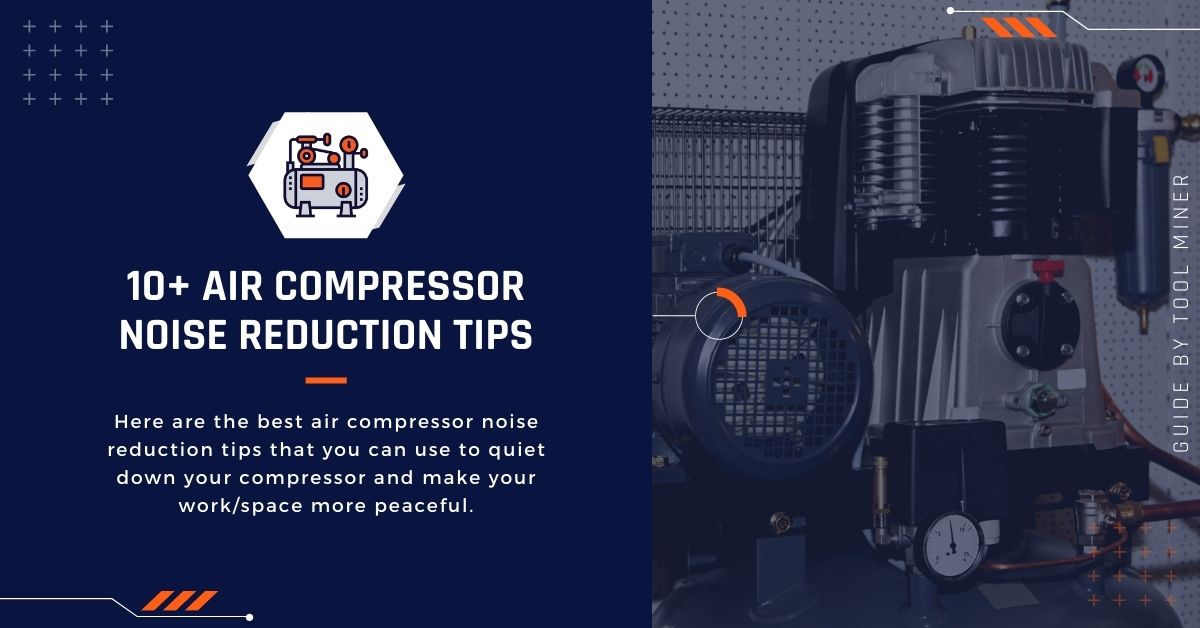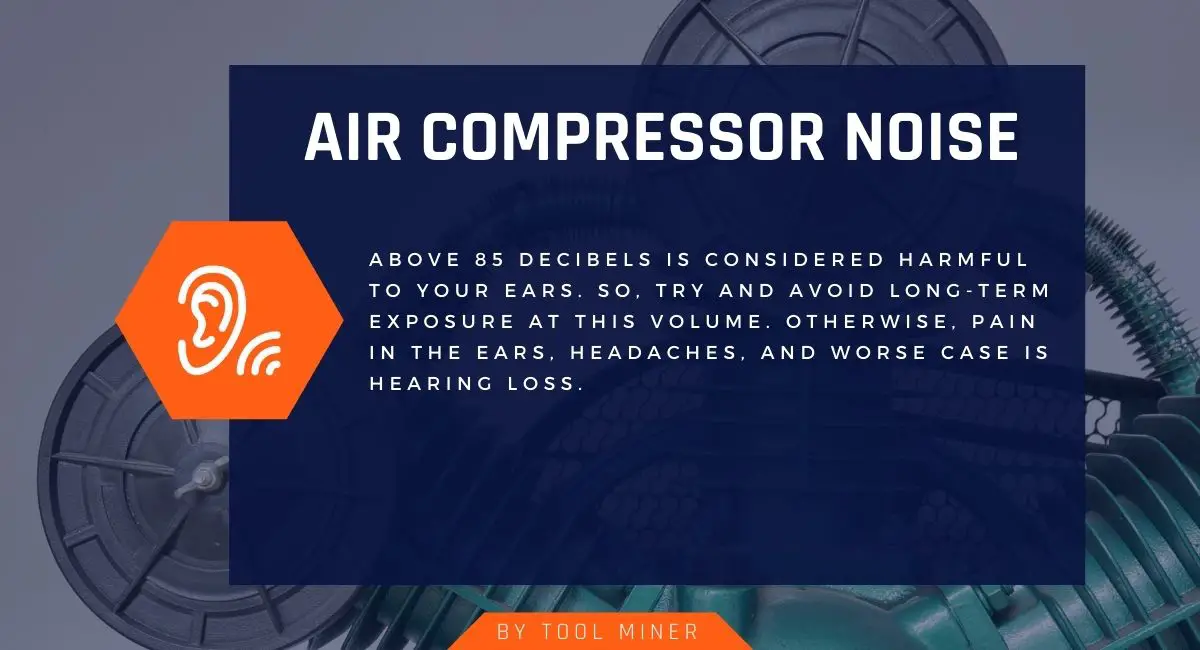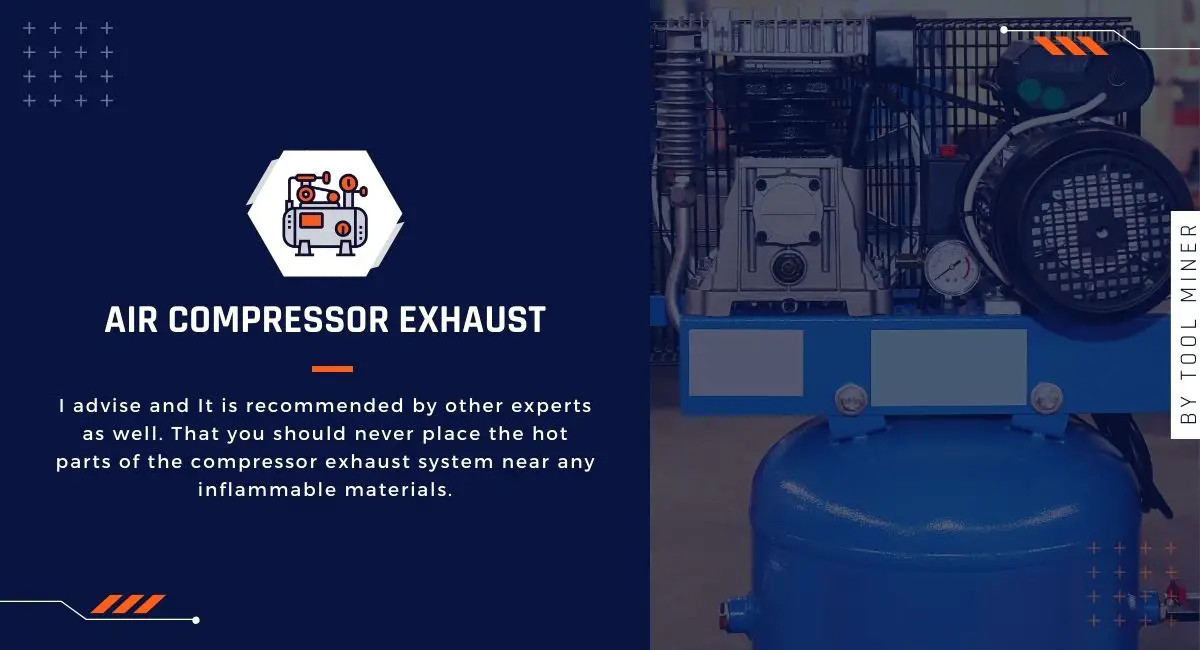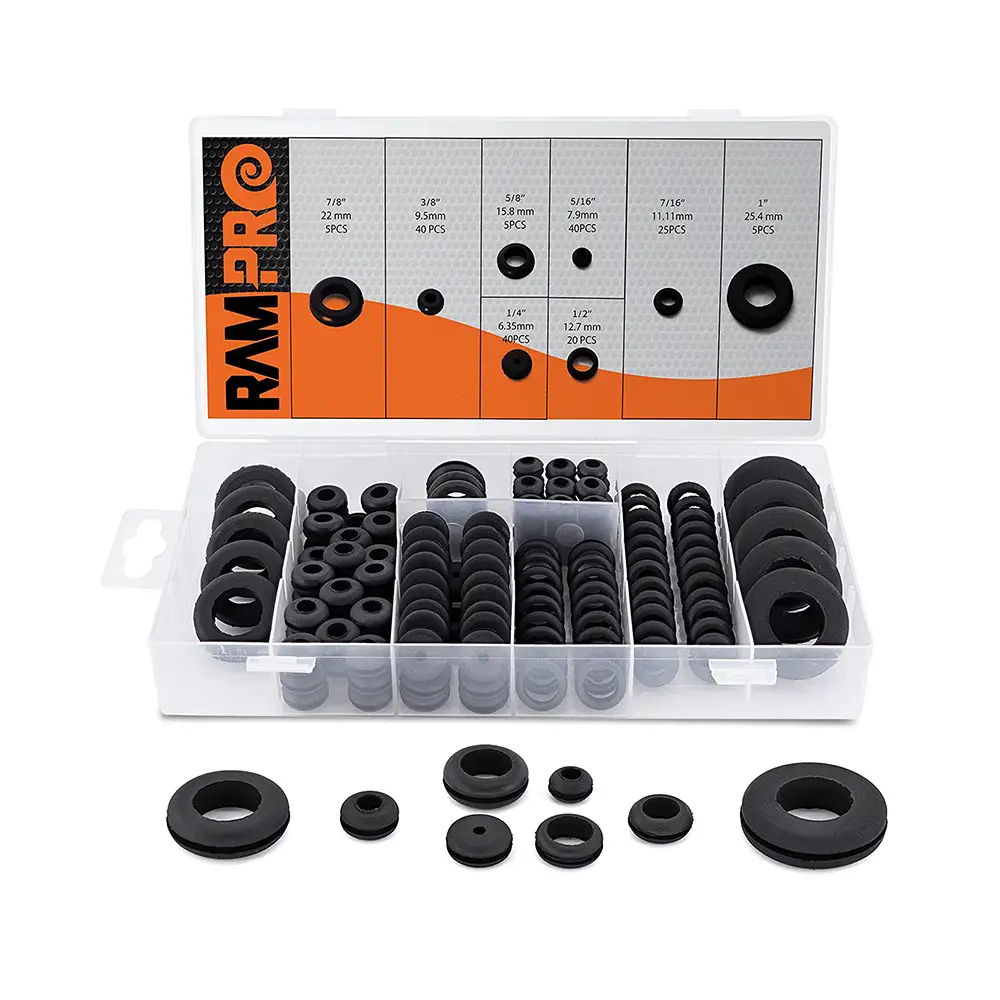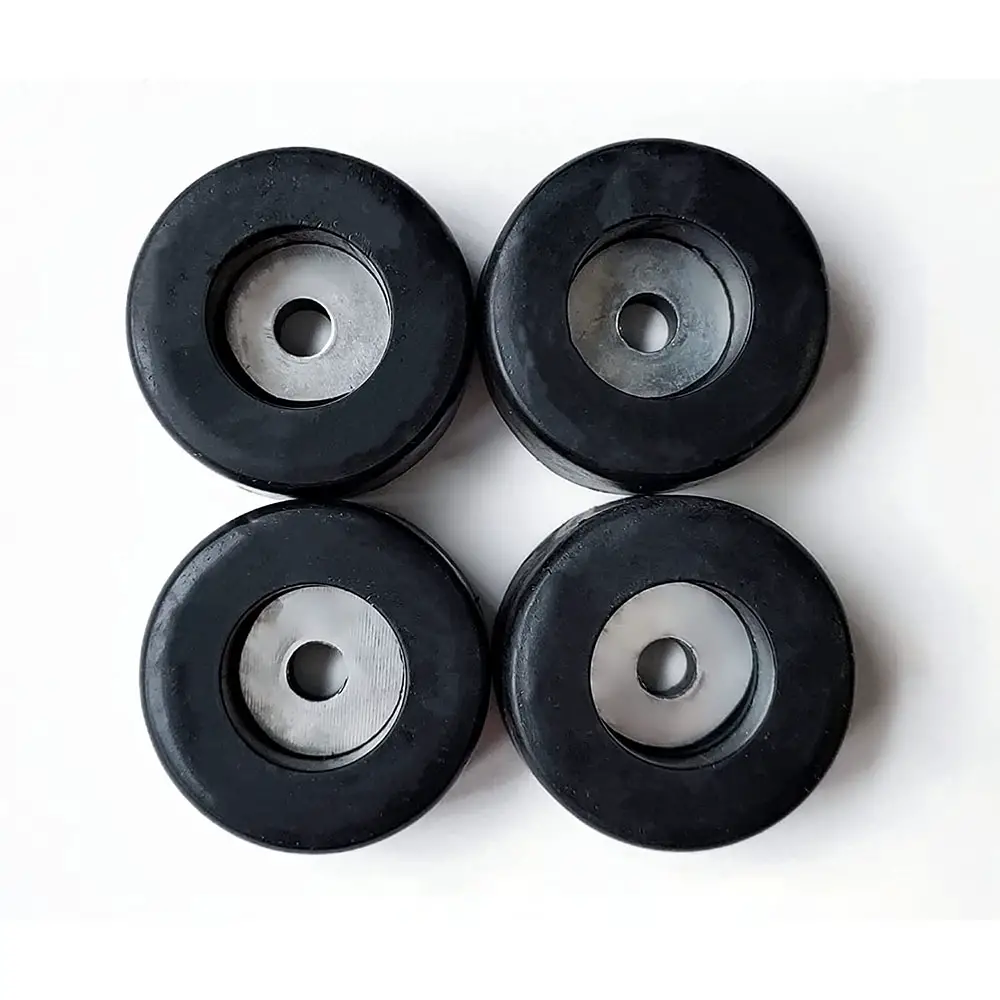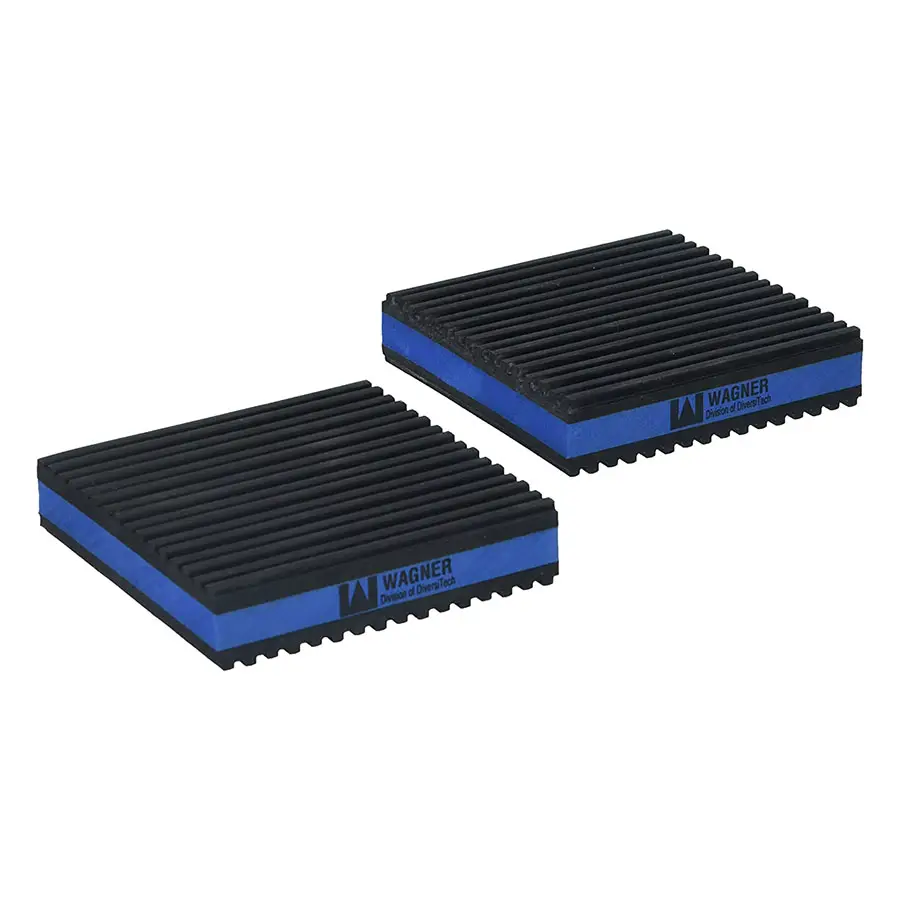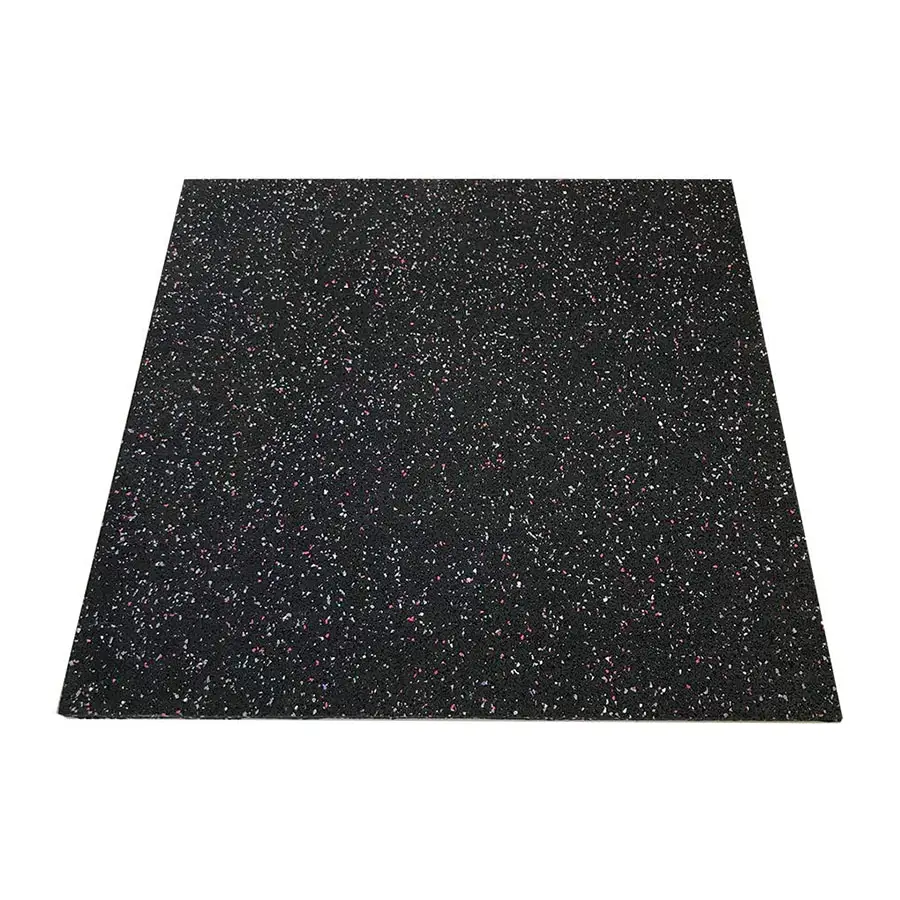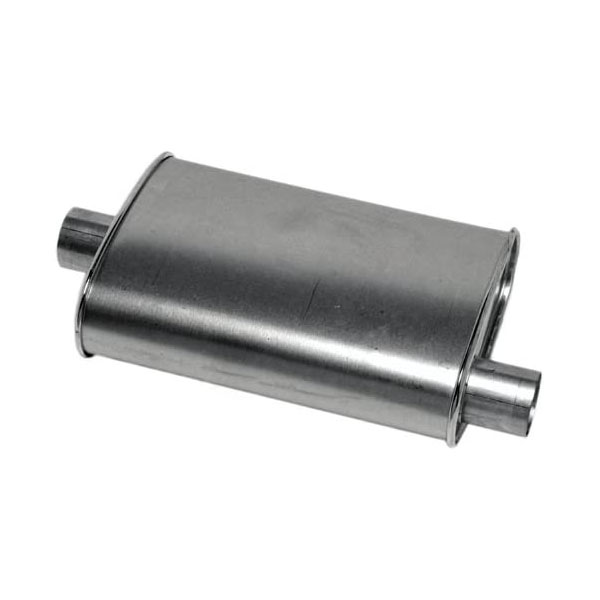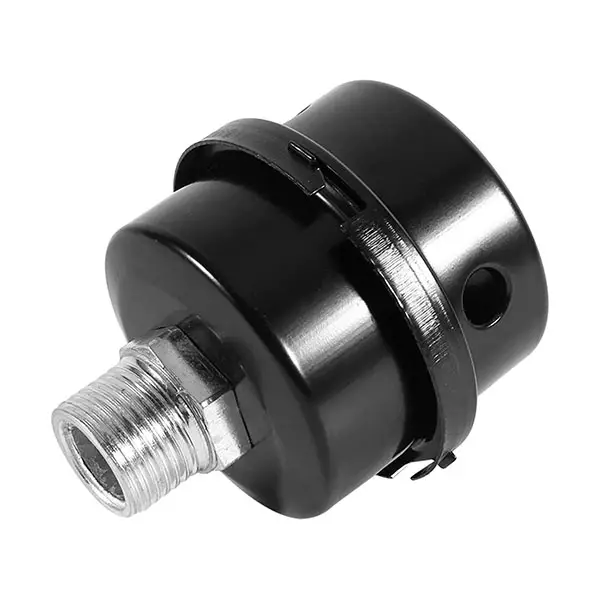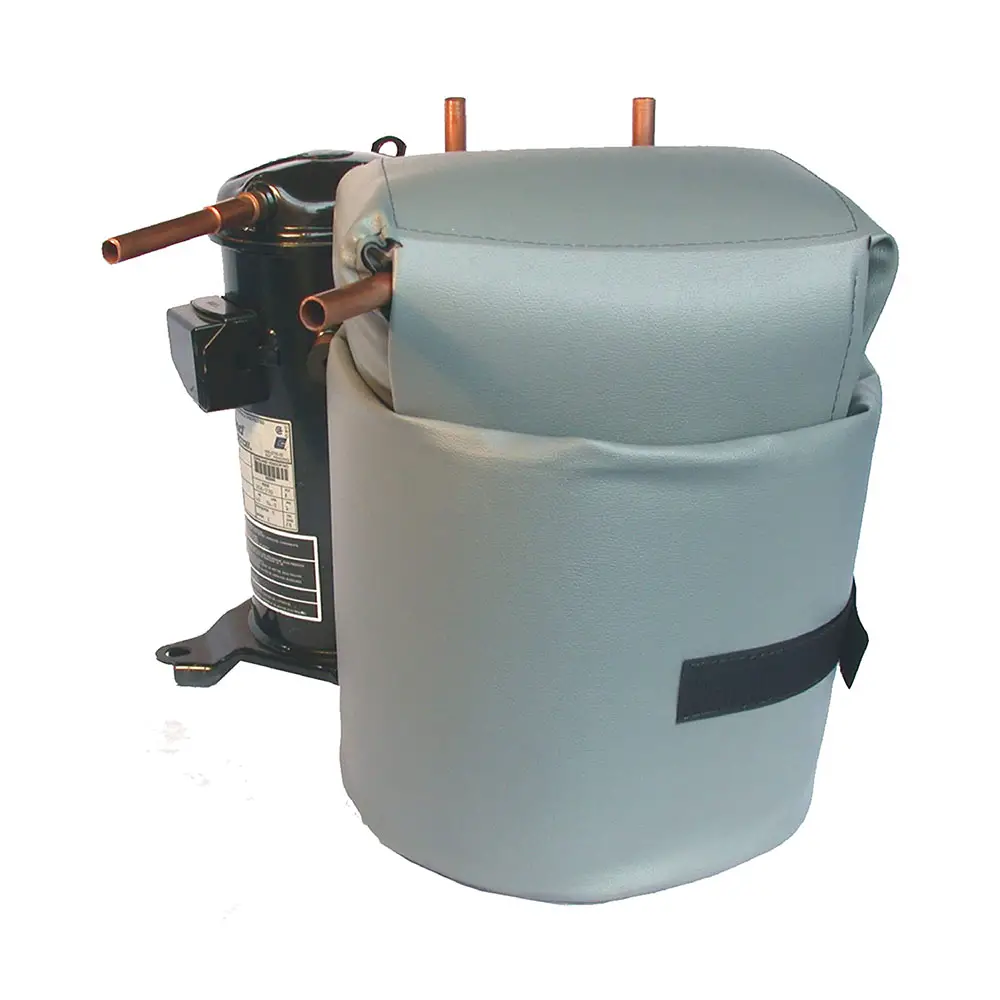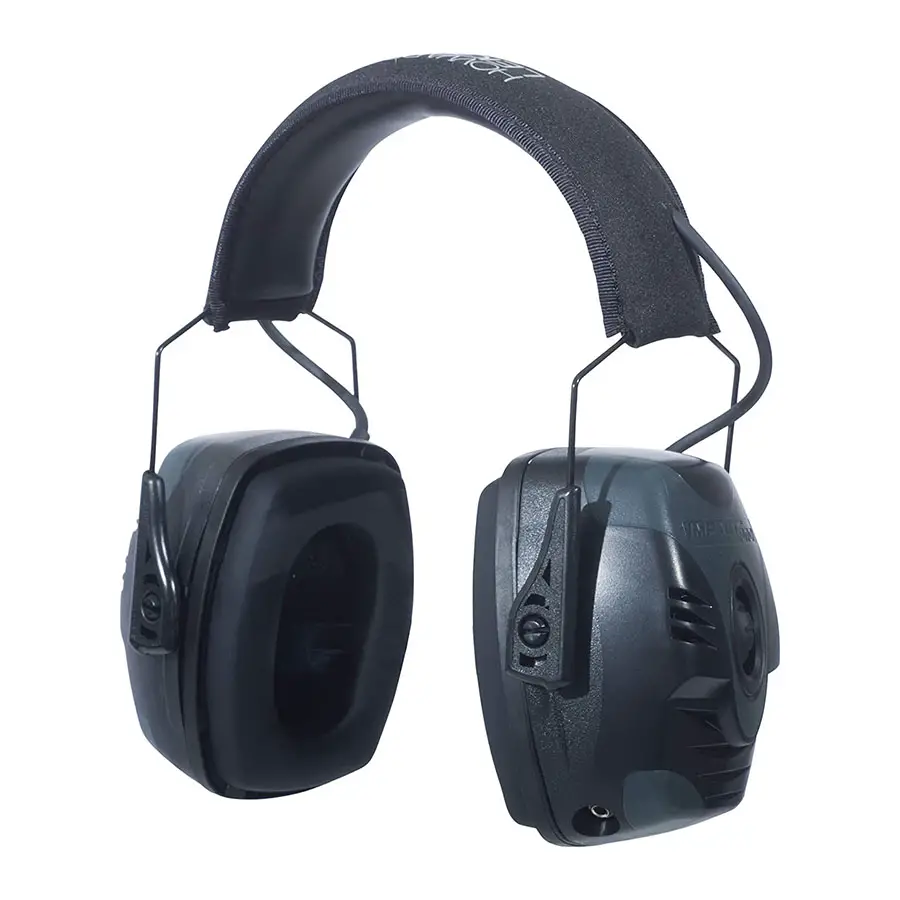My Top 10+ Air Compressor Noise Reduction Tips You Should Use! 2024
Ahhh! I know that familiar sound very well. Because I have been listening to it since my childhood. Whenever that sound started roaring through my home I was annoyed and irritated as well.
Guess what! That was the sound of the small air compressor that my uncle used with his air tools on woodworking projects. The whole house would rumble with that industry-type sound.
There was no stopping it… Until my uncle started applying certain tips. Just because the whole family was complaining to him about the noise. And I was front in lines as you see… Well, that’s family drama for ya!
So, he started using different gadgets, and tips to lower the noise. And I was watching how he applied the tips and used those accessories. I didn’t even imagine that I’ll be discussing those tips with all of you.
But, that’s how it goes… So, I guess you’re reading my story here would mean that your home, garage, and workplace also have the same kind of issue.
And that’s the main reason I wrote this air compressor noise reduction guide. These are practical tips that I learned from other DIYers, blogs, and of course most of them from my uncle.
Learning about Air Compressor Noise Reduction
I’ll be starting from the basics so you can have a way better understanding. Plus, a clear-cut mind on what to do and what to use.
So first, there is an air compressor decibel rating chart with different ranges. It’ll give you the know-how… that different compressors based on their specs operate on different noise levels.
Further, there are causes of noise in an air compressor. To better learn which factors usually irritate a compressor to produce such excruciating noises.
Finally, there are practical tips on how to quiet an air compressor. So, let’s begin, shall we?
Air compressor Decibel Ratings
All air compressors are built within a measured decibel rating. This means the air compressor noise levels are predetermined based on their specifications, the tools they can support, and the work they’ll gonna be used for.
Use Decibel Meter To Measure Noise Level
All air compressor brands design there each compressor model with its own unique set of parts. Thus, the material type and quality that is used to design a compressor give it a specific dB range.
And that’s why to measure all these compressors with different dB ranges, the sound or noise meter is used. I say that these small guys are the simplest and easiest way to measure air compressor noise levels.
Air Compressor Noise Levels
All of these compressors come in a preferred noise level range predetermined by experts and manufacturers. And I have arranged them under an air compressor decibel ratings chart.
The chart begins with air compressors with lower dB levels and goes up to compressors with higher dB levels.
Air Compressor Noise Level Comparison Chart
| dB Range | Types (Noise Levels) | Examples |
|---|---|---|
| 50 To 65 dB | Ultra Quiet | CAT [CAT 2010A, CAT-4610AC], Makita [MAC100Q, MAC210Q] |
| 65 To 80 dB | Normal Noise Level | Small Compressors, Pancake, Cordless, Tire Inflators |
| 80, 90 & Beyond | Louder Noise Level | Stationary, Industrial, 20, 30, 60, 80 Gallon Compressors |
Causes of Air Compressor Noise
Phew! That was cleared up… Now, as you have seen in the noise level chart. Let’s see who’s the culprit behind these excruciating noises. I have listed them here.
Air Compressor Intake Filter
The intake as you know work’s similar to a vacuum cleaner. The air intake in compressors generates more noise than other compressor parts.
It happens because of the filtration and compression of atmospheric air. Thus, they become louder than other compressor parts.
Air Compressor Exhaust
The “2nd-place” goes to the “Humble Air Exhaust”. These buds are placed after “Air Intakes” to produce noise.
The reason is when the air is compressed the residual or byproduct is discharged out through exhausts. Thus, more noise is generated.
Air Compressor Vibration
One of the most faced issues by compressor owners. It’s not that difficult but, it’s irritating and I dealt with it a lot.
As I told you in our oil vs oil-free air compressor review I did buy an unbranded cheaper air compressor which was unprofessional of me. Plus, the parts fittings were also of a lower tier.
As a result, I had to deal with vibrations that produced high noise levels. I was sick of it so I bought ear mufflers or what you call noise-reducing headphones.
That was back in years when I was a novice. So, I possibly know that vibrations begin because of two cases:
Firstly: When the compressor part fittings are not properly adjusted. After doing a compressor repair or maintenance you didn’t tighten or properly adjust the screws and compressor parts.
Secondly: It is the placement and storage of your compressor which is mentioned below.
Air Compressor Storage And Placement
The other factor that increases air compressor noise and above mentioned “Vibration” is the placement and storage.
Simply, the noise levels increase drastically. If you place your compressor on hard surfaces where the vibrations are not absorbed.
For example, compressor vibrations are not properly absorbed on hardwood and concrete floors.
On the other hand, if you have set up the compressor in a small crowded room. The noise will not get enough space to fade or disperse away.
Inadequate Air Compressor Lubrication
Another well-known issue for you… Adequate lubrication of your compressor leads to friction which I have talked about over and over again.
Due to the continuous collision, and working of parts with each other the lubricant between the joints begins to exhaust. In return, it produces the worst problem “Friction”.
This friction in internal parts causes wear and tear that causes metal decay. Due to metal parts rubbing with each other not only does the compressor’s noise level increase but also it becomes annoying.
It generates an excessive amount of heat that overall reduces the lifespan of your compressor. So, use a synthetic air compressor oil, it’ll reduce overall friction and overheating.
Materials Or Type of Air Compressor
Air Compressor Quality
Here is the main thing where I made a mistake. Remember I said being a “Newbie” I bought a local cheap air compressor.
The overall quality of the internal parts was not that good. Plus, the noise levels were shooting to the roof. So, the law applies here you know the old one!
“You Get What You Pay For!”
Types Of Compressor (Electric Or Gas)
Another important thing is what type of compressor you’re using. Is it a gas air compressor or an electric one?
Because electric air compressors are quieter in noise levels compared to gas compressors.
An electric one, you can count the small, tire inflators, cordless air compressors, or jumbos with high (20, 30, 60, 80) gallon capacity.
How To Quiet An Air Compressor? – 12+ Compressor Noise Reduction Tips
Well, until now we have learned about the decibel rating, seen a noise chart, and found out the causes of noise in air compressors.
Here you and I are going to learn and implement the compressor noise reduction tips to make our home, garage, and shop more peaceful.
1. Use Air Compressor Grommets
Of all the materials rubber is the one that absorbs noises very well. That’s why most DIYers and owners like you and we use rubber to dampen up the noise in their compressors.
The rubber grommets are circular-shaped rings that vary in size. They are used between different compressor parts to reduce vibrations and avoid parts rubbing with each other.
How To Attach Compressor Grommets
Here is a video on how to attach the air compressor grommets to the motor:
2. Air Compressor Anti Vibration Feet (Rubber Feet)
The rubber feet or anti-vibration feet are kind of the same as the above grommets but work as vibration pads mentioned below. They are used or mounted on the legs of air compressors.
In this way, they absorb the vibrations from compressors on hard surfaces like hardwood, or concrete floors.
The important thing you need to remember when owning these small dudes is their sizing. Yup, they come in various sizing depending upon your compressor.
3. Air Compressor Vibration Pads
As a DIYer, I say anti-vibration pads are durable and handy. They are mostly used by serious handymen and woodworkers for stationary compressors.
For example the 60 and 80-gallon air compressors. If you own these air compressors for your home garage then go for the vibration pads.
4. Air Compressor Anti Vibration Rubber Mats
Anti-vibration rubber mats or you can also know them as sound-deadening floor mats. As I have seen these mats are not the famous type. But, effectively reduces compressor vibrations.
They come in different sizes based on width and length and can be used with every size and type of air compressor. Plus, they’re also a good choice for hardwood and concrete floors.
5. Air Compressor Muffler For Larger Oiled Air Compressors
Another dandy little trick you can use is by attaching an air compressor muffler to the intake air hose. The intake silencer reduces overall noise up to 2 to 4 dB.
It especially works with larger compressors that have oiled filters and continuously running features. Such as Two-stage air compressors or other large air compressors.
These types of compressors are used in painting, sandblasting, or other jobs where you need continuous running air.
Air Compressor Muffler DIY
The hectic job here is the hoses attachment so let me inform you about it.
- Get two reinforced heavy-duty air hoses and attach them to the air compressor intake valves.
- Use hose clamps to tightly budge the hoses to the intake pipes. So they don’t get removed due to air pressure.
- The other ends of the hoses go into the intake silencer or muffler.
- Lastly, test it out and check if there is a drop in compressor noise or not.
Here is a video for you to understand the procedure easily.
6. Air Compressor Intake Filter Silencer
For small air compressors that have oil-free air filters, you can use an air compressor filter silencer. You don’t need extended air hoses for these.
They are used on the compressor’s air filter inlet. Effectively reduces the compressor air intake noise. Plus, blocks dust particles that are entering the compressor.
They fit all standard air compressors such as Porter-Cable, Craftsman, California Air Tools, DeWalt, Campbell, etc.
7. Air Compressor Noise Reduction Blankets
In special cases such as reciprocating or gas air compressors, noise blankets are used to reduce the noise. They can reduce noise up to 5 dB.
These noise reduction blankets are versatile as they can be used for a wider range of machinery that has noise issues. Such as air conditioners, heat pumps, and residential compressors.
One important thing you need to keep is that the exhaust portion of these gas air compressors should never be covered by these blankets.
8. Build A DIY Soundproof Box
Another great way to reduce your compressor noise is to build a DIY soundproof box. They are a bit difficult to build as you need proper measurements and you have to consider your compressor’s width, height, and length.
If you ask me… mostly 3/4-inch thick plywood is used for building these types of boxes. The inner walls of the box are lined with a 1/2-inch special acoustic foam panel for noise dampening.
Use a 3/4 or 1/2 cordless drill for drilling and driving screws to attach the acoustic foams with the plywood. Make sure the width, length, and height of the acoustic foam are equal to the plywood.
You can also use Loctite construction adhesive glue or a Gorilla heavy-duty adhesive spray for attaching the acoustic foams to the plywood. Leave space to attach an exhaust fan to dissipate the heat generated by the compressor.
During building the DIY box make sure to leave extra space for keeping the valves and hose inside the box. You don’t need to leave them out. Here are a few videos to help you out with your DIY project.
9. Air Compressor Storage And Placement
Well, if you want an easier job then maintain a distance between the machine and your workplace. I think 10 to 15 meters are enough or you can install your air compressor in another room.
This small tip can reduce compressor noise by up to 6 to 8 decibels. Do use a durable Flexzilla air hose or a hose reel. It is by far the best air compressor air hose.
Also, do let me know in the comment section what air hose you use. Using an extended air hose will make your work smoother and it makes it a lot easier to move around.
10. Wear Soundproof Earmuffs Or Earplugs
Well, for some folks the above trick works, and for some using PPE (Personal Protective Equipment).
Do know that noise of 80 to 85 dB is harmful if you’re exposing your ears to this level of noise for over 1 or 2 hours. The constant exposure causes hearing issues and headaches if listened to longer.
The worst-case scenario is noise-induced hearing loss according to the report of NCBI (National Center For Biotechnology Information). So, use earmuffs or earplugs for protection.
I hate using ear muffs because they feel uncomfortable and feel like itching in my ears. That’s why I use noise-reduction headphones.
They are way cooler than putting pills in your ears. The padding keeps the ears relaxed plus the overall noise is also reduced.
11. Doing A Scheduled Compressor Maintenance
Maintenance is a thing that is similar to cleaning up yourself at regular intervals. So, with regular maintenance, your compressor performs efficiently.
Cleaning only the outer parts is not enough. The compressor’s internal parts are built in a way that requires scheduled maintenance. The parts due to continuous work slowly wear down. As, these air compressor problem doesn’t stop here.
Inadequate or no maintenance overall reduces your compressor’s lifespan. Plus, the compressor also began to lose performance in application handling and smooth running as well.
So, making your air compressor maintenance checklist plays a crucial role. For example, using synthetic oil instead of conventional for proper lubrication, air filter changing and cleaning, prevention of clogging, tightening up the loosened screws and bolts, etc.
12. Get A Quiet Air Compressor
I recommend this option last because it’s a bit of a pricey endeavor. You should own a quieter air compressor with 50 to 60 dB noise levels if you don’t want to do the above chores.
These are specially designed air compressors built for quieter working environments. Here are a few of the best quiet air compressors that you can use in your garage and workshop. CAT 2010A, CAT-4610AC, MAC100Q, MAC210Q.
| Brand | Model | Noise Level (dB) |
|---|---|---|
| California Air Tools | CAT 2010A | 60 dB |
| California Air Tools | CAT-4610AC | 60 dB |
| Makita | MAC100Q | 58 dB |
| Makita | MAC210Q | 60 dB |
13. Talk To A Air Compressor Technician
Finally, the last option is to talk to a compressor technician or your compressor’s respective company. If your compressor is older or nothing is working out for you.
And don’t become the hero to save your compressor or else at the end of the day you’re gonna lose dollars. The compressor technicians will help you and your compressor to work quietly.
Conclusion
These machines sometimes become a pain in the head if not properly dealt with. That’s the reason I have listed all of the air compressor noise reduction tips that I have known.
If there is any left then do let me know in the comment section. I’ll add it to this guide.
Air Compressor Noise Reduction FAQs
Q: How To Make An Air Compressor Quiet?
Ans: Below are the 10+ air compressor noise reduction tips:
1. Use compressor grommets
2. Use compressor anti-vibration rubber feet
3. Use Air compressor vibration pads
4. Use Compressor anti-vibration rubber mats
5. Use an Air compressor muffler
6. Use Air compressor intake filter silencer
7. Use Air compressor noise reduction blankets
8. Build a DIY soundproof box
9. Look for a separate place for air compressor storage
10. Wear soundproof earmuffs or noise-reduction headphones
11. Doing a scheduled compressor maintenance
12. Get a quiet air compressor
13. Talk to an air compressor technician
Q: Why Are Air Compressors So Loud?
Ans: There are various reasons your air compressor can be loud. The most common of them are air compressor exhaust, air intake, friction between internal components, poor air compressor maintenance, and the type of air compressor you’re using.
Q: Do Noise Cancelling Headphones Protect Hearing?
Ans: Yes, noise-canceling headphones do protect your ears from both kinds of loud noises (active and passive). But, they are not noise reduction headphones (noise isolating headphones) which blocks all type of noises and are cheaper as well.

